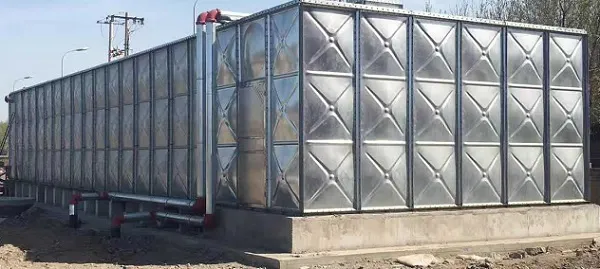loading...
- No. 9, Xingyuan South Street, Dongwaihuan Road, Zaoqiang County, Hengshui, Hebei, China
- admin@zjcomposites.com
- +86 15097380338
- Welcome to visit our website!
waste water treatment equipment
Wastewater Treatment Equipment An Essential Component for Sustainable Water Management
As the global population continues to grow and urbanize, the demand for clean water increases, challenging water supply and wastewater management systems. Wastewater treatment equipment plays a crucial role in addressing this issue by converting contaminated water into a reusable resource while safeguarding public health and the environment. This article explores the types, functions, and importance of wastewater treatment equipment in achieving sustainable water management.
Understanding Wastewater Treatment
Wastewater is any water that has been adversely affected in quality by anthropogenic influence. This can include effluents from households, industries, and agricultural runoff, all of which contain a wide range of pollutants. Wastewater treatment is the process of removing contaminants to render water suitable for discharge into the environment or for reuse. The process generally involves several stages, including physical, chemical, and biological treatment.
Types of Wastewater Treatment Equipment
1. Screens and Grates The first line of defense in wastewater treatment is physical screening. Equipment such as screens and grates are employed to remove large solids, debris, and rags from incoming water. This initial step prevents clogging and damage to more delicate treatment equipment downstream.
2. Sedimentation Tanks Also known as clarifiers, sedimentation tanks allow heavy particles to settle at the bottom through the force of gravity. The settled sludge is then collected for further processing, while the clearer water on top is directed to the next treatment phase.
3. Aeration Systems Aeration is crucial for biological treatment processes that rely on aerobic bacteria to break down organic matter. Aeration systems, which may include diffusers or mechanical aerators, introduce air into the wastewater, promoting the growth of these beneficial microorganisms.
4. Bioreactors These systems facilitate the biological degradation of pollutants. Variants such as activated sludge systems, sequencing batch reactors, and membrane bioreactors are employed depending on the specific characteristics of the wastewater. They enable efficient treatment of organic matter and nutrients.
5. Chemical Treatment Equipment Chemicals are often necessary to remove specific contaminants. Equipment used for chemical addition and mixing can help neutralize acidity, precipitate metals, or promote coagulation and flocculation for the removal of suspended solids.
waste water treatment equipment

6. Disinfection Units The final step in wastewater treatment typically involves disinfection, commonly achieved through chlorination, ultraviolet (UV) light, or ozonation. These processes eliminate pathogenic microorganisms, making the treated effluent safe for discharge or reuse.
Importance of Wastewater Treatment Equipment
The implementation of effective wastewater treatment equipment is paramount for several reasons
- Public Health Protection Untreated wastewater poses significant health risks, as it can harbor pathogens and toxic substances. Efficient treatment systems minimize these risks, ensuring that water released into the environment does not harm human health.
- Environmental Conservation Properly treated wastewater has a lesser impact on aquatic ecosystems. By reducing nutrient loads and contaminants entering rivers, lakes, and oceans, these systems help prevent issues such as algal blooms and biodiversity loss.
- Water Reuse Many municipalities are increasingly focusing on water reuse strategies to alleviate freshwater scarcity. Advanced wastewater treatment processes can produce high-quality effluent suitable for irrigation, industrial uses, or even potable applications, supporting sustainable water resource management.
- Energy Recovery Some wastewater treatment facilities integrate technologies that capture energy from the treatment process, such as biogas production from anaerobic digestion. This not only reduces operating costs but also contributes to renewable energy generation.
- Regulatory Compliance Governments around the world enforce strict regulations concerning wastewater discharge. Investing in advanced treatment equipment helps facilities comply with these regulations, avoiding costly fines and protecting their reputations.
Conclusion
Wastewater treatment equipment is fundamental to developing sustainable water management strategies. As technology evolves, these systems are becoming more efficient, cost-effective, and capable of addressing a wider range of pollutants. By investing in robust wastewater treatment solutions, communities can ensure public health, protect the environment, and contribute to the sustainable use of water resources for future generations. The responsibility to implement and maintain such equipment is not just a regulatory obligation, but a commitment to preserving our planet’s most precious resource water.
-
GRP Structures: The Future of Lightweight, High-Performance EngineeringNewsJun.20,2025
-
FRP Water Tank: High-Performance Storage for Corrosive and Clean Water SystemsNewsJun.20,2025
-
FRP Square Tube: The New Industry Standard for Chemical and Structural ApplicationsNewsJun.20,2025
-
FRP Pultruded Profiles: The Ultimate Choice for Lightweight Structural StrengthNewsJun.20,2025
-
FRP Handrails: The Safer, Smarter, and Stronger Choice for Modern InfrastructureNewsJun.20,2025
-
FRP Grating: The Smart Solution for Durable, Lightweight Industrial FlooringNewsJun.20,2025
-
Why Choose a Galvanized Water Tank for Your Storage NeedsNewsMay.21,2025
